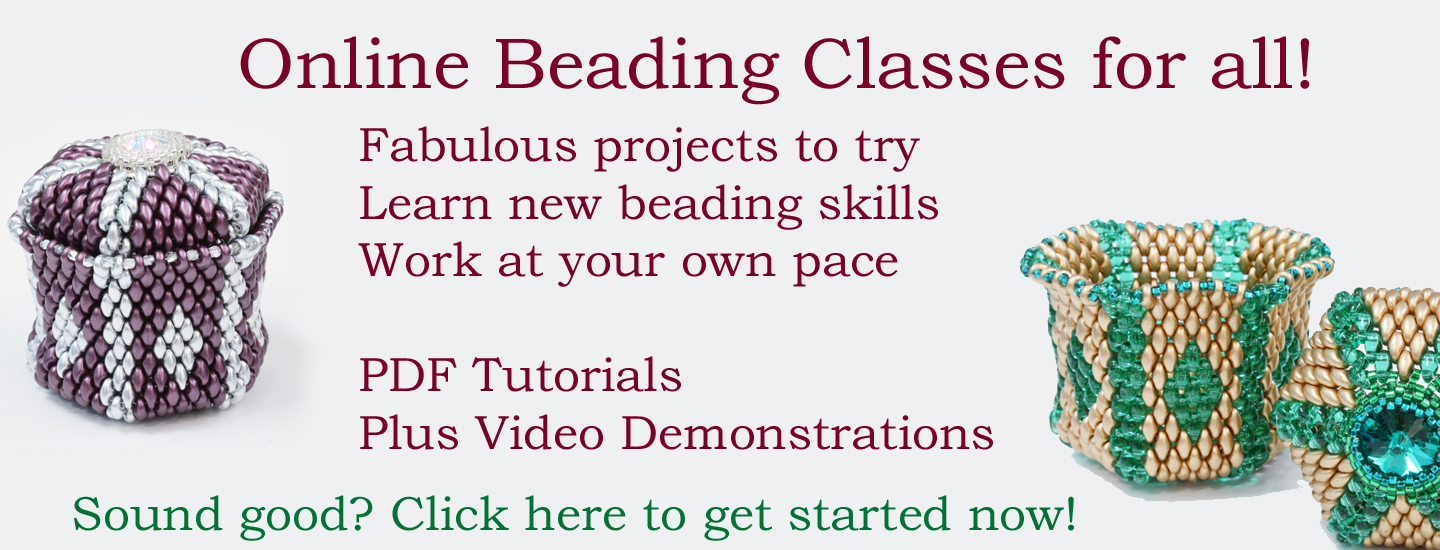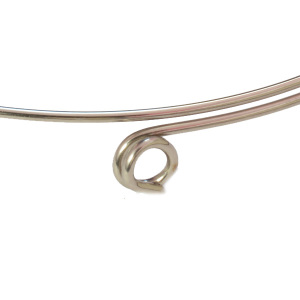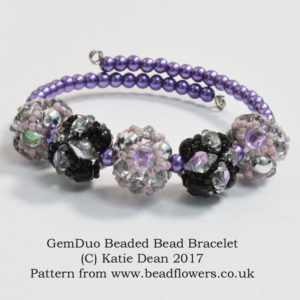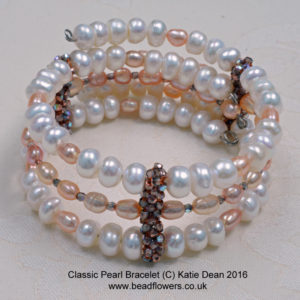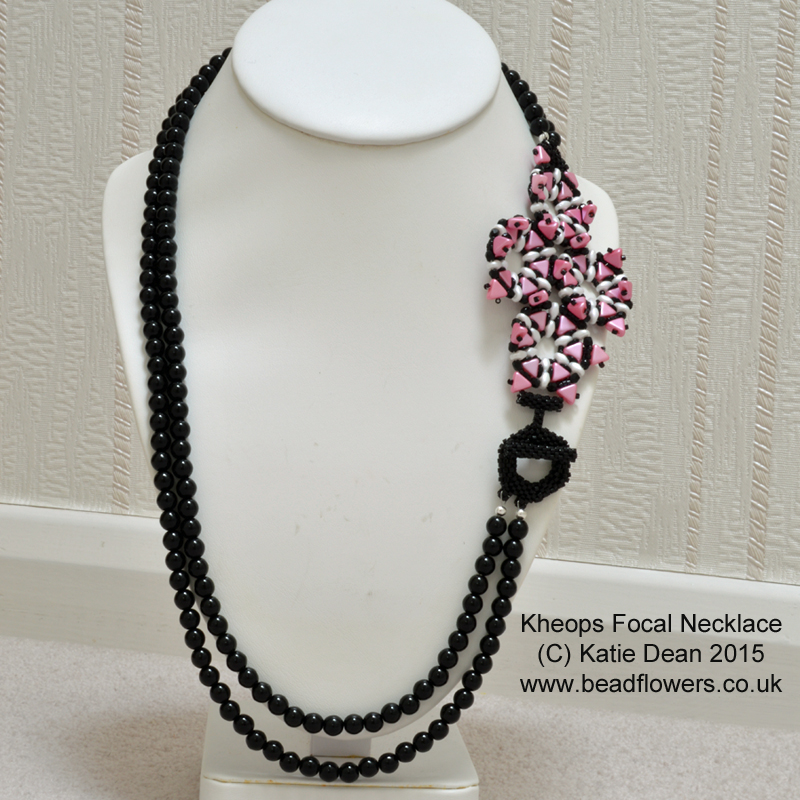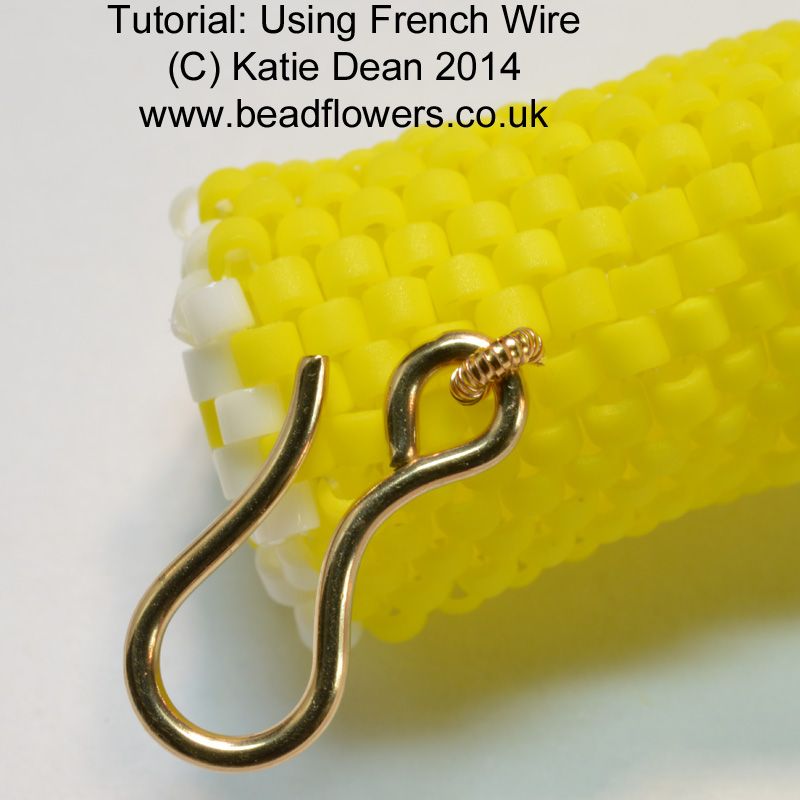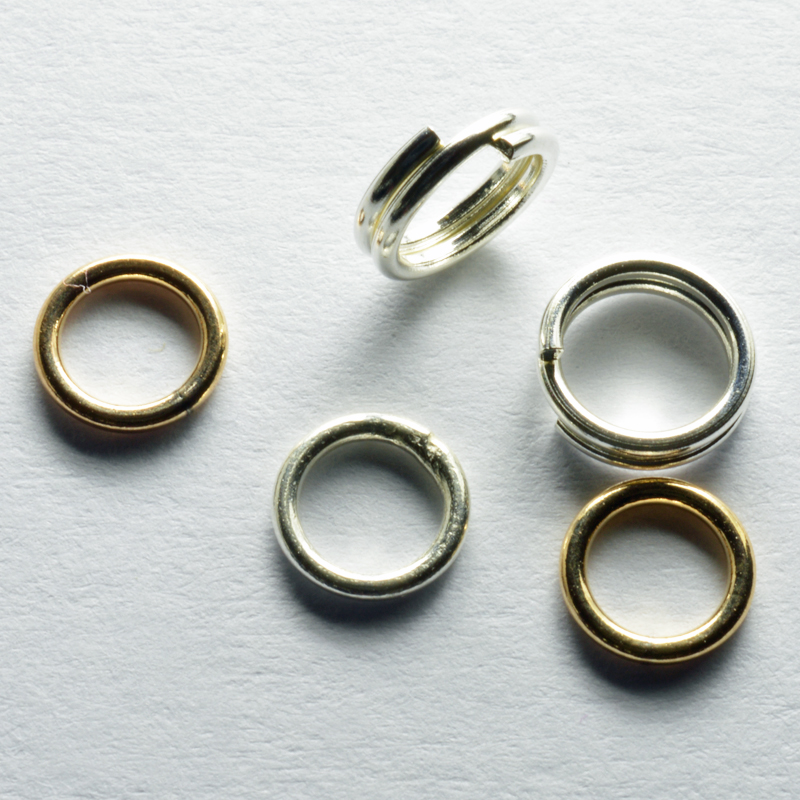Stringing Beads to Make Jewellery
When most people talk about jewellery making, they are often thinking of stringing beads onto some kind of material. So, what skills do you need to create jewellery that way? You may want some design skills. But mostly, you just need to understand the choice of techniques for finishing the stringing material you have chosen. So, if you are stringing onto thread, you would need a different way of finishing, compared to stringing onto wire. Does that all sound very confusing? Then let me start to explain…
What materials can you use for stringing beads?
Most necklaces and bracelets are strung either on some kind of thread, or specialist wire. So, let’s start to take a quick look at some of the options you have.
Threads
When you first go into a bead shop, you will see you have a big choice of threads. Some are designed for bead-weaving (that’s stitching beads together). Others are designed for stringing, or for more specialist techniques, like Kumihimo, or knotting pearls.
Now, beads can be quite heavy. So, if you are going to string onto some kind of thread, you will need something reasonably thick and sturdy. Not too thick, though…your thread needs to fit comfortably through the holes of your beads! Some options you could consider would be S-Lon, or C-Lon, but choose the thicker varieties (you can also use these threads for bead-weaving).
As a beginner, I have also used Nymo for stringing. I’m not sure whether this is ‘right’, but it certainly worked! And I am a big fan of experimenting. So, don’t get bogged down in getting everything ‘right’ – just see what works for you.
To find out more details about the threads I have mentioned – and others – please use this link to visit the section on thread.
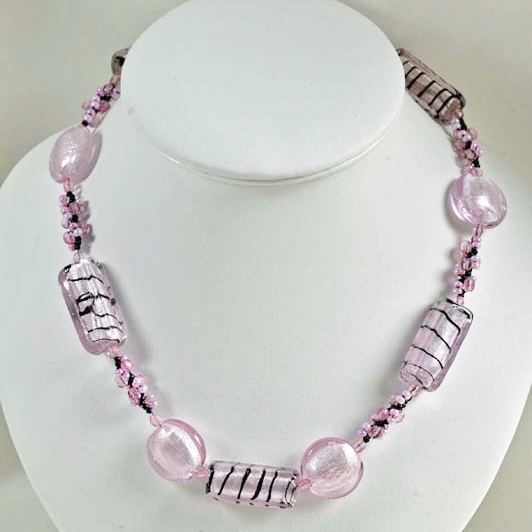
Attaching a clasp
If you have used a thread for your project, then you need to use this thread to attach your clasp. Now, you can just stitch straight through the clasp ring – there’s nothing wrong with doing that. But if you want a more professional finish, you might be better off using French Wire. This is basically a tube of finely coiled wire which sits over your thread, through the clasp. It helps to protect the thread and it looks neat. But it will only work if you’re using fine thread.
You might also try using a Calotte. This is a special finding that is designed to attach to beadwork on one end, and link to the clasp. Again, this may not be suitable for all stringing materials. If you need more help with attaching clasps, you can find out more in this post.
If you have made a long rope-style necklace that requires no clasp, then you can tie the two ends of your thread together in a secure knot and weave the thread back through the necklace, knotting between beads as you go.
Wire-based stringing materials
You can get a number of specialist jewellery-making wires. These are generally very fine strands of wire that have been woven together to create a strong material. It is still flexible, so will drape attractively. But it is strong and durable. Common brands that fall into this category are Beadalon and Tigertail. You can find out about wires for stringing in this section.
If you are stringing on a stranded metal product like Beadalon or Tigertail, then you will need to learn how to use crimps to attach a clasp. This isn’t as scary as it sounds!
Crimps are basically little rings of metal. You thread your stringing material through them, then flatten them to secure the string. You may find it helpful to invest in some crimping pliers if you are using this method of finishing jewellery.
Leather Cord
You might also have seen jewellery made with leather cord. Again, it is very simple to string your beads onto a piece of leather. To add the clasp, you would need to use specialist leather crimps. These are little pieces of metal that fold over and grip onto the end of the leather. They have a ring to which you can attach your clasp.
Stringing materials that don’t need a clasp
You can make basic stretchy bracelets and rings by stringing your beads directly onto elastic. You will not need a clasp for this type of project. So, you should just finish off by using a surgeon’s knot to tie the ends of your elastic together. Then add a dab of jewellery glue or clear nail varnish to secure the knot.
If you are making rope-length necklaces on thread, you can also use this method of finishing. The rope length will fit over the head, so doesn’t need a clasp to fasten and unfasten.
Memory wire is another great option for stringing beads. This is available in bracelet or necklace size. It is like a coil of wire that stretches, so it just sits comfortably around the wrist or neck and doesn’t need a clasp. However, you do need to do something with the ends of the wire to prevent your beads from falling off. So, you have a couple of options. You can just coil the ends over to create a loop that will hold the beads in place. Or, you can buy memory wire end caps to finish the ends. These just glue onto the ends of the wire.
Making earrings
If you want a quick and easy pair of earrings, then your answer is stringing beads! This time, just string them direct onto a head pin or eye pin. Form a wrapped loop to hold the beads in place, and add your earring finding. Easy!…Or, if that leaves you stunned and confused, take a look at this post for a few more details!
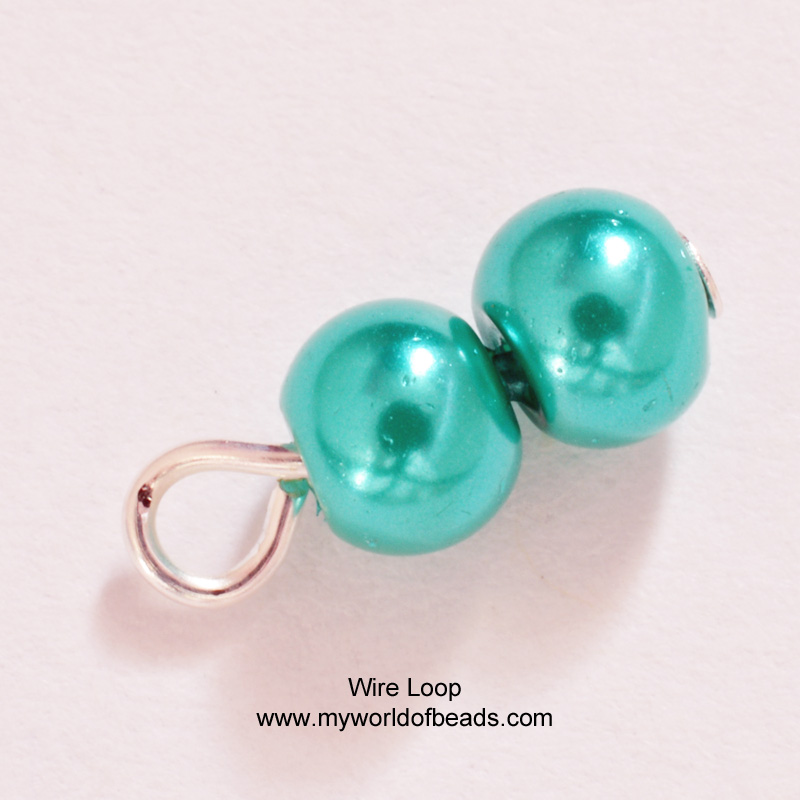
Designing strung jewellery
Once you have mastered the correct techniques for finishing strung jewellery, you need to consider the design element.
A small child is capable of stringing beads, but if you have ever seen the results, you will probably have realised that there is a certain art to stringing beads. Young children focus on the hand co-ordination required for the technique, often without thinking too much about what they are adding. The results are usually a rather jumbled mixture of beads in random colours, shapes and sizes, reflecting what the child liked best as they chose their next bead. Don’t get me wrong, this can look great. And there is a real joy in watching children explore their creativity like this.
But you may want to put a little more thought into your creations!
Professional jewellery looks effortlessly appealing. The maker will have thought long and hard about stringing their beads in just the right order. This may be in a deliberate and regular pattern or it may be a carefully constructed appearance of randomness.
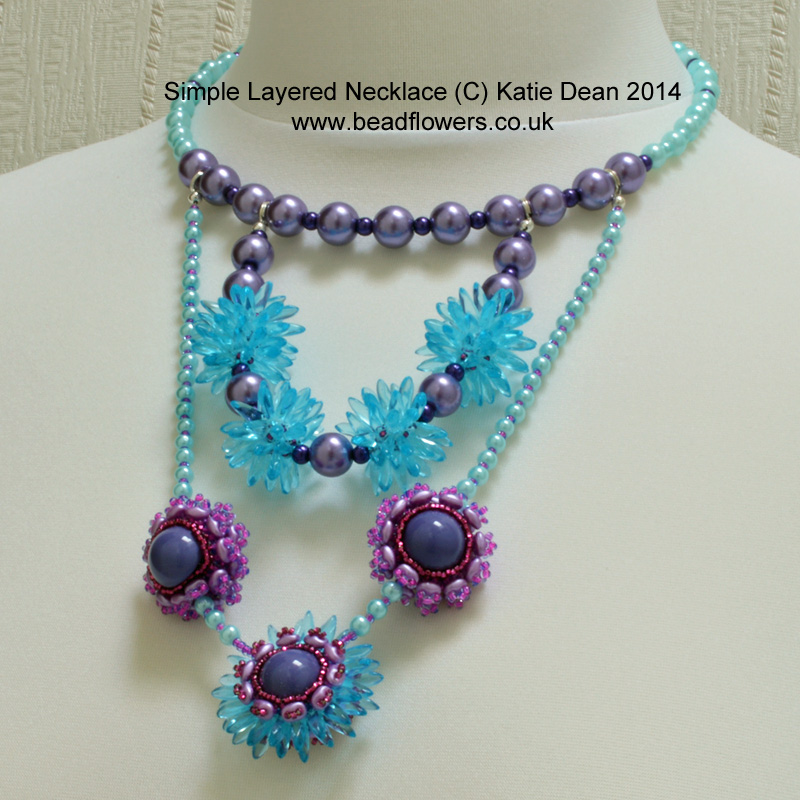
The most interesting jewellery will string beads in unusual combinations and patterns that force the human brain to think about what it is viewing. If you are looking to take your jewellery making to this more sophisticated level, then you need to understand the principles of design and learn how to apply them as you work out your stringing pattern.
If you want some quick practice, you can find a free pattern for the layered necklace above, here.
So, that just gives you a quick overview of the different options you can try for stringing beads. I invite you to explore further. Investigate some of the links to learn more about the materials, and then just have fun experimenting.

